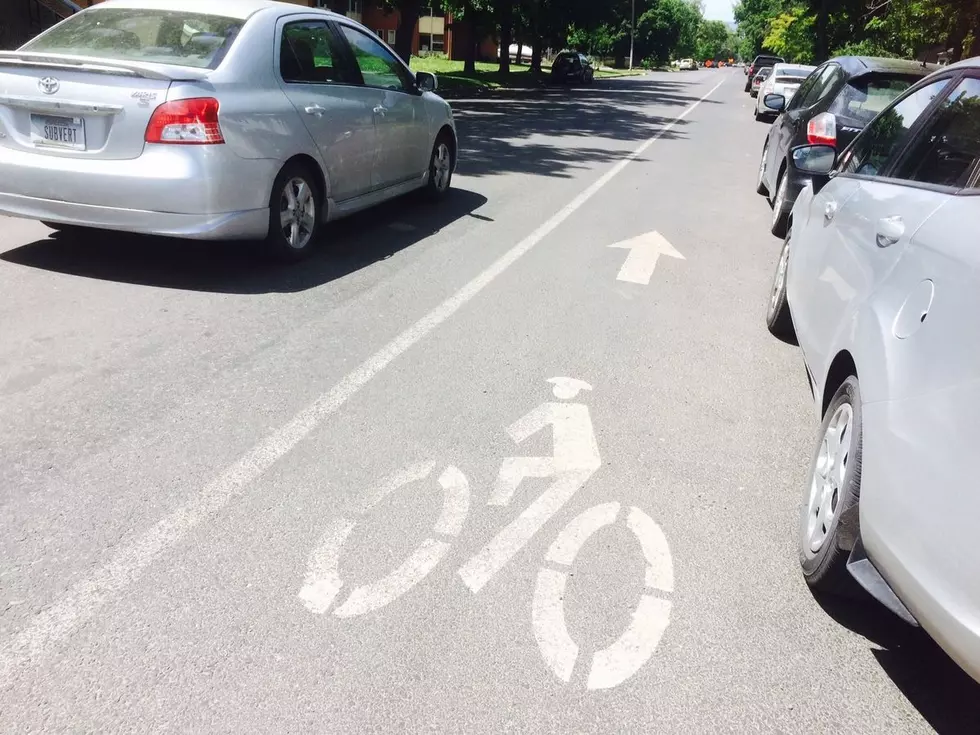
City leaders OK electric bikes on commuter trails; adopt pedestrian infrastructure plan
Over an activist’s outcry that Missoula “doesn’t care about pedestrians,” the City Council on Monday approved the use of electric bikes on primary commuter trails and some sidewalks, then gave the go-ahead to the city’s first master plan for pedestrian infrastructure.
Combined, the measures should help Missoula achieve ambitious goals calling for the use of a diverse range of transportation options in coming years, all intended to wean residents from reliance on fossil fuels.
Said Councilman Jordan Hess, “I was compelled by testimony in committee from parents of young children who use our commuter trails every day, and from people limited by age or disability who need e-bikes to get around.
“We also have very significant goals surrounding climate change, surrounding mode split, and electric bikes are a reasonable way to help us achieve these goals.”
Longtime pedestrian activist Ross Best provided the counterpoint during Monday night’s public hearing, insisting that the city’s Bicycle Pedestrian Advisory Committee is “very biased toward bicycles” and that city officials simply don’t care about pedestrians.
Best opposed any use of electric bicycles on city trails or sidewalks, saying they pose a danger to pedestrians – particularly to those like himself who have hearing loss.
E-bikes are too quiet, Best said, and he won’t be able to hear them coming up from behind.
But Councilwoman Heather Harp said she also has some hearing loss, and it’s “difficult to hear anybody coming up from behind.” Electric bikes will be no better or worse, she contended.
“I would hope we can all use a little dose of common sense and make the best of what we have,” she said.
There are many Missoula residents who simply cannot afford a car, and electric bikes are a reasonable transportation alternative, Harp suggested. Without the ordinance approved Monday, Missoula was out of sync with state law, which allows the use of e-bikes.
The council’s lone dissent came from Ward 4 Councilman John DiBari, who throughout the months-long deliberations opposed allowing motorized vehicles of any type on city trails.
“I do appreciate that we have very ambitious mode-split goals, and that electric bikes will help us achieve those goals,” he said. “But what it is really going to take is a recommitment of resources – from spending hundreds of thousands of dollars maintaining our automobile-oriented network and putting that into the infrastructure that supports bicycle and pedestrian facilities.”
As approved, the ordinances amend two sections of city code to permit the use of electric bicycles on commuter trails and public right of way.
Bicycle-pedestrian manager Ben Weiss said Missoula’s primary commuter trails include the Kim Williams, Bitterroot, Milwaukee, Northside Greenway, Grant Creek, Ron’s River and RUX. Those trails are paved, plowed and either have lights or will have lights for after-dark commutes.
Without an ordinance specifically allowing e-bikes on those trails, riders could be fined up to $500 and sentenced to six months in jail, according to City Attorney Jim Nugent.
Two types of electric bikes are now allowed on the commuter trails and certain sidewalks: Type I, which have pedals, and Type 2, which have pedals and throttles. Those bikes can reach speeds up to 20 mph.
Not allowed are Type 3 bikes, which reach 28 mph speeds.
E-bikes will be allowed on city sidewalks, but only under human propulsion. They will not be allowed on sidewalks in the Central Business District that are signed “no bikes.”
An earlier proposal to allow the use of electric scooters on trails was tabled before it reached a public hearing or final vote of City Council, as was a proposal to allow private companies to rent e-bikes and scooters in a so-called “share” system.
The reception was more enthusiastic Monday night for the city’s new pedestrian facilities master plan.
Presented by transportation planner Tara Osendorf, the document is intended to provide a network of infrastructure that allows Missoula residents of all ages and abilities to safely make their way – on foot – around town.
It is geared toward increasing the percentage of residents and visitors who choose non-motorized modes of transportation for all types of trips, she said.
The plan ranks every Missoula neighborhood by its need for infrastructure and other improvements required for safe passage by pedestrians – in many cases, the need for sidewalks.
In addition, it assesses needs in Target Range, East Missoula and the Mullan Road/west of Reserve areas. In those areas, streets are sometimes needed and sidewalks in many other instances. Crosswalks are often missing.
Also assessed are areas that fall short of meeting Americans with Disabilities Act requirements, as well as street lights.
Best, the pedestrian activist, told council members that he “generally supports” the pedestrian facilities plan, but is concerned about whether its implementation will be a priority for city leaders.
Missoula simply is not pedestrian friendly, he said.
“The basic problem is in the crosswalk,” Best said. “A significant number of drivers are not going to respect the pedestrian.”
Missoula has laws that require drivers to stop for pedestrians, he said, “but there is no interest in enforcement.”
With Monday night’s unanimous adoption, the pedestrian facilities plan joins the existing cadre of plans governing the future of bicycle infrastructure, public transportation and vehicle use.
“These plans all complement one another,” said Councilman Hess. “These documents will move us forward toward reaching our mode-split goals.”
Here is a link to the pedestrian plan: https://pub-missoula.escribemeetings.com/filestream.ashx?DocumentId=4900
